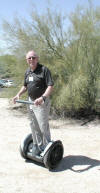Gordon Bell
Microsoft Research Silicon Valley
Email: GBell At Microsoft.com is the most reliable communication link
Mobile phone & answering machine: (415) 640 8255 best voice link
Office & Computer LYNC Phone: (415) 972-6542; this rings on my PC
FAX only if you must: MS fax gateway(425) 936-7329 address to "gbell"
Microsoft Office: 835 Market Street, Suite 700, San Francisco, CA, 94103
Gordon Bell is a principal researcher in the Microsoft Research Silicon Valley Laboratory, working in the San Francisco Laboratory. His interests include extreme lifelogging, digital lives, preserving everything in cyberspace, and cloud computing as a new computer class and platform. He proselytizes Jim Gray’s Fourth Paradigm of Science.
Gordon has long evangelized scalable systems starting with his interest in multiprocessors (mP) beginning in 1965 with the design of Digital's PDP-6, PDP-10's antecedent, one of the first mPs and the first timesharing computer. He continues this interest with various talks about trends in future supercomputing (see Papers… presentations, etc.) and especially clustered systems formed from cost-effective “personal computers”. As Digital's VP of R&D he was responsible for the VAX Computing Environment. In 1987, he led the cross-agency group as head of NSF's Computing Directorate that made "the plan" for the National Research and Education Network (NREN)aka the Internet.
When joining Microsoft in 1995, Gordon had started focusing on the use of computers and the necessity of telepresence: being there without really being there, then. "There" can be a different place, right now, or a compressed and different time (a presentation or recording of an earlier event). In 1999 this project was extended to include multimedia in the home (visit Papers… presentations, etc.).
He puts nearly all of his atom- and electron-based bits in his local Cyberspace—the MyLifeBits project c1998-2007. This includes everything he has accumulated, written, photographed, presented, and owns (e.g. CDs). In February 2005 an epiphany occurred with the realization that MyLifeBits goes beyond Vannevar Bush's "memex" and is a personal transaction processing database for everything described in June 14, 2005 SIGMOD Keynote. The MyLifeBits project with Jim Gemmell is described in an article by us in the March 2007 Scientific American. Alec Wilkinson described Gordon and the MyLifeBits effort in the 28 May 2007 issue of the New Yorker. By the publication of the book the final epiphany was that our e-memories are where the records reside and bio-memories are just URLs into these records.
He and Jim Gemmell have written a book entitled Total Recall: How the e-Memory Revolution Will Change Everything which was published in=n September 2009. You can order it at Amazon, Barnes & Noble, Borders, orIndieBound. Please check out the Total Recall book website. Your Life, Uploaded: The Digital Way to Better Memory, Health, and Productivity is the paperback version published September 2010. It is available in Dutch, French, Italian, Japanese, Korean, and Portuguese.
The remainder of the site includes these pages:
- Papers, books, PowerPoint presentations, videos since 1995, when joining Microsoft
- Extended Bio-- education, work history, honors... Alaska fishing and France biking
- Vitae: Listing of books, computers, interviews, papers, patents, projects, and videos
- THE COMPUTER MUSEUM ARCHIVE An archive of The Computer Museum in Boston 1980-1998.
5. Gordon's Cyber Museum that has Bell's books, the Hollerith Patent, the CDC 8600 Manual, a talk about Seymour Cray, an album of supercomputer photos, posters about the history of computing, etc.
6. Gordon's Digital Equipment Corporation (DEC) Cyber Museum has artifacts, books, brochures, clippings, manuals, memos (e.g. The VAX Strategy), memorabilia, photos, posters, presentations, etc. relating to Digital Equipment Corporation a.k.a. DEC.
7. Supercomputing and the CyberInfrastructure lists articles, memos, talks, and testimony regarding the various aspects of high performance computing including funding, goals, and problems in reaching to the Teraflops in 1995 and Petaflops in 2010.
Bell's Law of Computer Classes and Class formation was first described in 1972 with the emergence of a new, lower priced microcomputer class based on the microprocessor. Microsoft Technical Report MSR-TR-2007-146 describes the law and gives the implication for multiple cores per chip, etc. Established market class computers are introduced at a constant price with increasing functionality (or performance). Technology advances in semiconductors, storage, interfaces and networks enable a new computer class (platform) to form about every decade to serve a new need. Each new usually lower priced class is maintained as a quasi independent industry (market). Classes include: mainframes (60's), minicomputers (70's), networked workstations and personal computers (80's), browser-web-server structure (90's), web services (2000's), palm computing (1995), convergence of cell phones and computers (2003), and Wireless Sensor Networks aka motes (2004). Beginning in the 1990s, a single class of scalable computers called clusters built from a few to tens of thousands of commodity microcomputer-storage-networked bricks began to cover and replace mainframes, minis, and workstation. Bell predicts home and body area networks will form by 2010. See also the description of several laws (e.g. Moore's, Metcalfe's, Bill's, Nathan's, Bell's) that govern the computer industry is given in Laws, a talk by Jim Gray and Gordon Bell.

 Gordon was with his Diamond Exchange colleagues at the Boulders, Carefree, AZ where the group tested the Segway, a dual-processor, two wheeled, computer and Human Transporter. Since the test in 2002, he has taken and recommended tours in the Pacificia near San Francisco, and Washington, DC. Yes, this is a product endorsement. Right is the Ford SUV version
Gordon was with his Diamond Exchange colleagues at the Boulders, Carefree, AZ where the group tested the Segway, a dual-processor, two wheeled, computer and Human Transporter. Since the test in 2002, he has taken and recommended tours in the Pacificia near San Francisco, and Washington, DC. Yes, this is a product endorsement. Right is the Ford SUV version